It is said that if Presidential Elections held in Sri Lanka in January 2015 was a referendum, the 2015 General Elections that followed was in a way electoral validation the results of that process. Even though the United National Party (UNP) led United National Front for Good Governance (UNFGG) and Sri Lanka Freedom Party (SLFP) together could not garner an absolute majority of 113 in the new parliament, yet they decided to come together on a common platform through a memorandum of understanding in consultation with senior SLFP leader Chandrika Bandaranaike Kumaratunga (CBK) to form a national unity or consensus government for two years. This ‘National Unity Government’ has now completed one ear in August 2016.
This article aims to analyse the performance of the coalition government on various fronts.
Stability of the Government: In July 2015, the widely perceived ruling trio of President Sirisena, Prime Minister Wickremesinghe and CBK had decided to form the National Unity Government for two years. Last month, they signed a fresh MoU to up the term of this coalition to five years, there by suggesting that a government so formed will find full term stability. It may be mentioned here that the UNP led UNFGG and SLFP lead United People's Freedom Alliance (UNFA) have 106 and 95 seats respectively in the new parliament. But the internal political conflict within UNFA has affected the functioning of the Government. One of the major destabilizing factors for the Government has been the fact that Mahinda Rajapaksa (MR) has not disappeared from the political calculus and continues to provide a rallying platform for the political detractors. Soon after the parliamentary elections, UNFA’s dissident faction of MR loyalists formed a ‘Joint Opposition’ when majority of its 52 members came from MR’s supporters among the SLFP MPs. Thus President Sirisena, who also heads the SLFP, is not in absolute control of his own party. To that extent, the ‘enemy within’ syndrome adversely impacts the Unity Government’s ambitious agenda of providing good governance and the related legislative agenda. Any attempt by present SLFP leadership to accommodate the MR faction can have disastrous consequences for the party’s unity, as already hinted by CBK when rumours started about appointing MR loyalist Gotabhaya Rajapaksa as second-in-command of SLFP. There are some inherent structural conflicts within the system: both the President and the Prime Minister are in a way directly elected and belong to different political parties which have ruled Sri Lanka separately for 68 years - UNP for 33 years and SLFP for 35. So far, the coalition government has survived but its capacity to take developmental agenda forward has been marred by these structural constraints.
Delivery of Promises: This is an area where the Government’s performance could be assessed as ‘mixed’. People were expecting swift action from the Sirisena-Wickremesinghe Government on resolution of issues of high visibility such as unsolved attacks, disappearances and murders that took place during the previous regime. Similarly, the proposed enactment of a new constitution to bring-in crucial electoral reforms, abolition of executive presidency, institution of a mechanism for devolution of power to the provinces, are all left in limbo. Admittedly, steps are being taken to work on a new constitution but given the deep divides and emotive approaches of the stakeholders, the drafting process is bound to be protracted. Steps have also been initiated towards consolidating democratic gains by restoring public confidence in State institutions including the judiciary and the police. Government’s laudable decision to co-sponsor the UNHRC resolution on reconciliation has spelled well for its cogency and has removed the long-standing mistrust between Sri Lankan Tamil Diaspora and the Government at the Centre. Despite the confusion and furor created by Joint opposition, the ‘Office of Missing Persons Bill’ was passed in the Parliament, which will be followed by constitution of a Truth and Reconciliation Commission - an essential prerequisite for lasting peace and reconciliation. So even if progress is visible in direction of delivery of promises, but its pace is less than satisfactory.
Economic Situation: Maintaining and accelerating economic growth always remains a priority with any government, particularly in the developing world. That is so even for the Sirisena-Wickremesinghe administration. According to the Government’s own admission, the country was facing a major financial crisis with a debt burden at the staggering figure of SL. Rs. 8,000 billion - most of it taken as loan by the former regime at high interest rates. Thus for every Rs. 100 that the country earned, as much as Rs. 97 had to be repaid as loans and interests.1 Consequently, in the past one year, Sri Lanka had been facing heavy fund outflows and overseas debt repayments amid declining foreign-exchange reserves. A potential balance of payments crisis was averted due to International Monetary Fund’s (IMF) bailout package of $1.5 bn in May this year (2016). Foreign-exchange reserves fell by a third between late 2014 to $6.2 billion at the end of March 2016. Moody's Investors Service, in a report just before the IMF deal noted that general government debt was around 76 percent of the Gross Domestic Product (GDP) in 2015, up 71.6 percent from five years earlier.2 The fiscal deficit was 7.4 percent of GDP in 2015 which is well above the 4.4 percent target. The Government is aiming to boost its low revenue collection through an increase in the Value-Added Tax (VAT) rate, but this entire effort has become contentious. The VAT controversy coupled with overall soaring cost of living has generated unrest among labour and working classes. Acknowledging that investment was a key factor underpinning economic growth, the Government is turning towards China to outline a long-term strategy for economic revival and development. In sum, it is assessed that the economy is moving from one incident to another without any concrete strategy.
Foreign Relations: Things are moving well on this front. Chapter five of the MoU that led to formation of a National Unity Government stated that a non-aligned policy needs to be followed in such a manner that the Sri Lankan identity will be protected while maintaining friendly and strong relations between all nations.3 The Government needs to be given credit for successfully pulling Sri Lanka out of international ostracism by accepting responsibility of war crimes, showing willingness to pursue justice and engaging constructively with the international community and international organisations. Engagement with major world powers is visible and the Government’s commitment to social reconciliation is acknowledged world over, though there are reservations about the pace of progress in this area as well. Government’s conspicuous tilt towards China, especially after criticizing MR’s regime for its over-dependence on the latter, seems to be balanced by continued bilateral engagement with India. Intense high level debates on relations with India and China has become a story of the past. The Government has succeeded in changing the discourse from ‘either India or China’ to ‘both India and China’ besides accommodating regional and extra-regional players on board. This should not be considered an insignificant achievement even though there are a number of unresolved issues between India and Sri Lanka. Hopefully, with some effort on the part of both the Governments, these issues too would get satisfactorily resolved soon.
Good Governance: The constraints and checks and balances that Government introduced in the aftermath of 19th Constitutional Amendment and even before the parliamentary elections, mandated the establishment of certain independent commissions. The third chapter of the MoU of National Unity Government relates to the crackdown on corruption. In this area, the abysmally slow pace of investigation against the big-shots of the previous regime has caused considerable disillusionment to the people, occasional arrest and release of some of them being seen as an act of tokenism. Further, allegations of two major economic scandals against the former Chief of the Central Bank, appointed by the present Government, has put a question on its seriousness in tackling corruption. But the Government has done well in other spheres of governance. Recently passed Right to Information Act aims to bring more transparency and accountability in governance. The Megapolis Initiative in the Western Province is a major project that will see an overall resurgence of the province. Thus in totality, performance on this front can be rated as somewhere between below average and average.
Conclusion
Thus one year after the formation of the new coalition government, things have not exactly panned out the way they were promised to be. But one has to be equally mindful that this Government had inherited an intrinsically corrupt structure of governance. The electoral victory has bequeathed upon them a heavy burden of expectations from all constituencies. But like in case of Hinayana Buddhism (which stems from Theravada branch of Buddhism that is practiced in Sri Lanka), where the burden of sins cannot be transferred to others, any attempt on the part of the Government to try to shift the burden of popular expectations against to the unsavoury legacy of the previous regime or its electorates themselves, cannot be justified. The new Government has knowingly and consciously accepted that burden, and therefore the buck must stops there.
The reality is that the people are undergoing hardships due to rising cost of living, worsening economic situation and inefficiency and lethargy of the administration. The Port City Project in its refurbished ‘avatar’ has irked environmental activist, the civil society and local stakeholders, while theories of backdoor political deals are doing rounds; some are even sensing the whole exercise of forming Unity Government to be a political arrangement contrived for survival and self-preservation rather than fulfillment of the lofty pre-election promises. While that could be a rather harsh assessment for an administration that is just a year old and one which had a huge baggage of mis- governance to carry. Conversely, it must be granted credit for preserving and repairing the deeply fractured social fabric by maintaining a fine balance between Sinhala chauvinism and Tamil and minority aspirations to a great extent. This delicate fabric needs to be repaired and not allowed to wither away. The very fact that analysts in Sri Lanka are coming up with one year report card for this Administration - something that was unthinkable three years back - speaks for the Government’s robust defence of vital democratic values and its commitment to strengthen them. The Sirisena- Wickremesinghe duo is making conscious efforts to mend the things but lack of coherent vision over certain pressing issues like Arjuna Mahendran’s second term as Chief of Central Bank, involvement of foreign judges in war crime investigations, nature of new constitution etc. are being deviously exploited by the Joint Opposition (JO) to whip up tensions. The challenge is to work towards collective responsibility and not to let JO’s clamour subdue the Government’s efforts, as here, optics matter more than reality.
In totality, barring economy, constitution drafting and development of North and East, people may be dissatisfied with the pace of work but to date, no group is questioning the intent and sincerity of President Sirisena. His vision might not be the panacea but it is far more persuasive than cynicism of the opposition. The voice of majority can be summed up as follows,
As it still keeps the hope of better Sri Lanka on;
For disillusions of idealism
anytime outweighs frightening absolutism”
Endnotes:
- ‘One Year After: A Critical Analysis’, Daily Mirror, Sri Lanka, August 17, 2016 http://www.pressreader.com/sri-lanka/daily-mirror-sri-lanka/20160817/textview
- Leslie Shaffer,‘Why Sri Lanka’s economic outlook is looking less rosy’, CNBC, May 2, 2016 http://www.cnbc.com/2016/05/02/why-sri-lankas-economic-outlook-is-looking-less-rosy.html
- Tharushan Fernando ‘UNP and SLFP reach two year agreement’, News1st, 21 August 2015 http://newsfirst.lk/english/2015/08/unp-and-slfp-reach-a-two-year-agreement/107750
Published Date: 2nd September 2016, Image Source: http://nation.com.pk
(Disclaimer: The views and opinions expressed in this article are those of the author and do not necessarily reflect the official policy or position of the Vivekananda International Foundation)



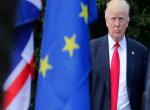
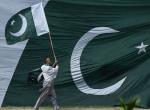
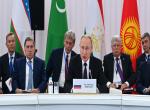

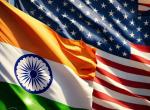
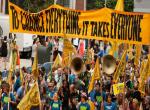

Post new comment